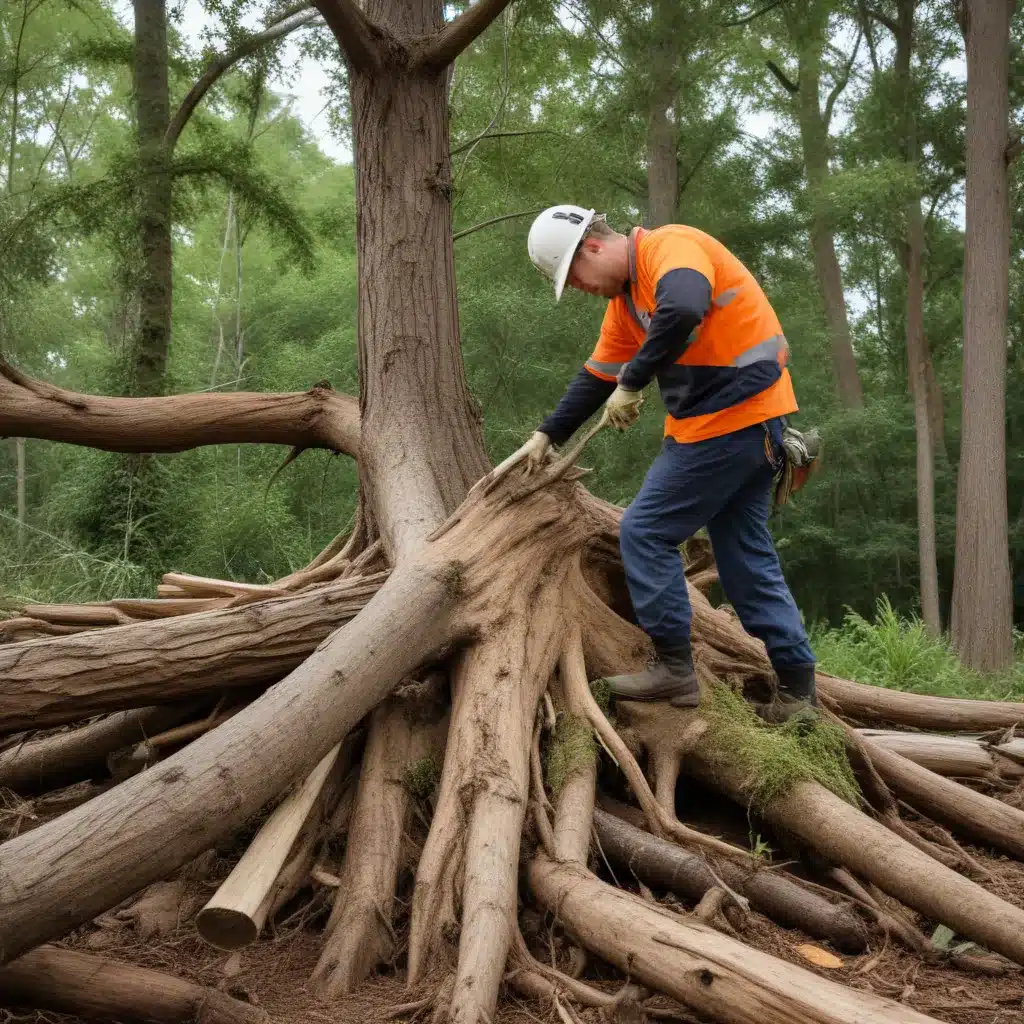
As a tree care specialist at TriCounty Tree Care, I recognize the vital role that urban forests play in community resilience and disaster recovery efforts. The integration of tree removal strategies into comprehensive planning is crucial for mitigating hazards, responding effectively to emergencies, and building long-term resilience. In this article, we will explore the multifaceted considerations surrounding tree removal, from hazard mitigation and emergency response to urban forest management and environmental sustainability.
Disaster Recovery and Resilience Planning
The challenges posed by climate change are significantly altering the types and magnitudes of hazards that communities face. Emergencies and disasters can vary in size, scope, and complexity, and the effects of a singular catastrophic event or a series of events can be exacerbated by the changing climate. Effective disaster planning encompasses the four cornerstones of emergency management: preparedness, response, recovery, and mitigation.
Hazard Mitigation
Tree removal can play a crucial role in hazard mitigation, particularly in areas prone to severe weather events, such as hurricanes, ice storms, or high winds. Proactive identification and removal of hazardous trees or branches can help prevent damage to critical infrastructure, homes, and public spaces. By addressing these potential threats, communities can enhance their overall resilience and reduce the impact of future disasters.
Emergency Response
During the response phase of a disaster, the rapid and strategic removal of damaged or fallen trees is essential for clearing access routes, restoring power, and ensuring the safety of first responders and residents. Tree care specialists, in coordination with local authorities, can provide valuable expertise and resources to support these emergency operations, ultimately facilitating a more effective and efficient recovery process.
Long-term Resilience
Beyond the immediate response, the integration of tree removal strategies into long-term resilience planning can yield significant benefits. By considering the ecological and environmental impacts of tree removal, communities can develop comprehensive plans that prioritize the preservation of urban forests, while also addressing the need for strategic tree removal to mitigate future risks.
Urban Forest Management
Effective urban forest management is a cornerstone of disaster resilience planning. By proactively assessing the health and condition of the urban tree canopy, communities can identify and address potential hazards before they manifest as emergencies.
Tree Risk Assessment
Regular tree risk assessments conducted by qualified arborists are essential for identifying trees that pose a threat to public safety or critical infrastructure. These assessments can inform the prioritization of tree removal and pruning activities, ensuring that resources are allocated efficiently and effectively.
Tree Maintenance and Pruning
Ongoing tree maintenance and pruning programs can help maintain the structural integrity of the urban forest, reducing the likelihood of tree failures during severe weather events. By implementing best practices in arboriculture, communities can enhance the resilience of their urban trees and mitigate the need for reactive tree removal during disasters.
Replanting and Reforestation
In the aftermath of a disaster, strategic replanting and reforestation efforts can help restore the urban tree canopy and promote long-term resilience. By carefully selecting species that are well-suited to the local climate and environment, communities can rebuild their urban forests with a focus on diversity, sustainability, and ecosystem services.
Environmental Considerations
The integration of tree removal strategies into disaster recovery and resilience planning must consider the broader environmental implications. Careful consideration of the ecosystem services provided by urban forests, as well as the impacts on wildlife habitat and sustainability, can help ensure that these strategies align with broader environmental goals.
Ecosystem Services
Urban trees provide a range of ecosystem services, including stormwater management, air purification, carbon sequestration, and microclimate regulation. By understanding the value of these services, communities can make informed decisions about tree removal and prioritize the preservation of critical elements of the urban forest.
Wildlife Habitat
The urban forest also serves as an important habitat for a variety of wildlife, including birds, insects, and other small animals. Tree removal activities should consider the potential impacts on these ecosystems and seek to minimize disruption to the extent possible, while also addressing the need for public safety.
Sustainability Impacts
Sustainable practices in tree removal and urban forest management can help mitigate the environmental impacts of disaster recovery efforts. This may include strategies such as chipping and composting removed trees, utilizing renewable energy sources for equipment, and prioritizing the use of native or adapted species in replanting efforts.
Policy and Regulations
The integration of tree removal strategies into disaster recovery and resilience planning is often guided by a complex web of municipal codes, ordinances, and regulatory frameworks. Understanding and navigating these policies is essential for ensuring the successful implementation of these strategies.
Municipal Codes and Ordinances
Many municipalities have established tree protection ordinances or urban forestry management plans that outline the requirements and procedures for tree removal, permitting, and mitigation. Tree care specialists must be familiar with these local regulations to ensure compliance and align their practices with community-specific goals and priorities.
Permitting and Approval Processes
In addition to local codes and ordinances, the permitting and approval processes for tree removal activities can vary significantly across jurisdictions. Navigating these processes efficiently and effectively is crucial for timely disaster response and recovery efforts, as well as long-term resilience planning.
Funding and Incentive Programs
Securing the necessary funding and resources to support tree removal and urban forest management initiatives is a common challenge for many communities. Identifying and leveraging available grant programs, tax incentives, or other financial mechanisms can help facilitate the implementation of these critical strategies.
By integrating tree removal strategies into comprehensive disaster recovery and resilience planning, communities can enhance their overall preparedness, response, and long-term resilience. This multifaceted approach, rooted in urban forest management, environmental considerations, and policy frameworks, can help ensure the safety and well-being of residents, while also preserving the invaluable ecological and aesthetic benefits of the urban tree canopy. For more information on how TriCounty Tree Care can assist with your disaster recovery and resilience planning efforts, please visit www.tricountytreecare.com.


